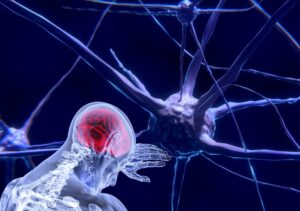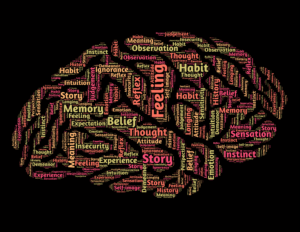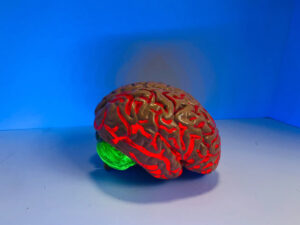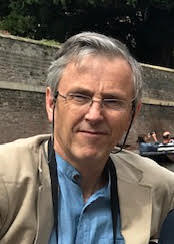Written by Peter Afford
Reviewed by Nancy Eichhorn
When Stephen W. Porges initially shared his Polyvagal theory, he was humbled by the overwhelming response from psychotherapists—many felt they had finally been vindicated, authenticated, validated. What they knew intuitively was shown, via neuroscience, to be real and true.
His “neuroception” (neural circuits reading cues of danger in our environment) and social engagement system (adding to our understanding of our sympathetic and parasympathetic nervous system) supported feelings of physical safety and emotional safety when attuned to/connected with others in our surroundings—relationships were clearly essential for growth and change.
Continuing neuroscientific research on the brain has given us a wider scope and more complete picture of how our environment and our culture shape us. And it supports a necessary shift to whole-body therapy as therapists explore how the mind modulates the body and the body the mind.
Neuroplasticity, neurogenesis, attention and focus, and affective neuroscience (the study of the neural basis of emotions) provide a clearer understanding of why our therapeutic processes work, as well as imparting ideas for improving what we do. Neuroscience allows us to “cross-reference psychological thinking with biological reality” (Afford, 2020, pg. 250).
The amount of new research, outcome results, clinical applications and theoretical positions is simply amazing. For me, it helps to have one place where someone knowledgeable can synthesize the data and offer both technical/scientific understanding and clinical applications.
Peter Afford’s new book, Therapy in the Age of Neuroscience: A Guide for Counsellors and Therapists, provides “a series of maps of the human psyche based on our biology and evolutionary history.” He offers his book as “a guide to key areas of neuroscience that inform the theory underlying psychotherapy and how they can be applied to practice.” He clearly lays out “the science and outlines what therapists need to know about the human nervous system to engage in the subject.” He covers neuroscience underlying key aspects of therapy such as relationships, emotion, anxiety, trauma and dissociation, mind body connection and more.
Peter details how our mind and body are interlinked, and he delves into our brain, considered a nervous system, and why it has two minds. He writes about the importance of relationships and social engagement, emotions and felt sense (which makes sense since he has been a Focusing teacher since the 1980s). He spent quite a bit of time on our right-left brain hemisphere, a theme he notes of importance in the book. There’s information about the mind/body connection and engaging our mind, as well as input about the chemistry of our social brain including the states of play and immobilization (Stephen W. Porges’ work is well cited)
I was not surprised to read Porges opening words of support:
“In Therapy in the Age of Neuroscience, psychotherapist Peter Afford boldly integrates the voices of contemporary neuroscientists into a therapist-relevant narrative that interlaces psychological constructs including diagnostic features with a knowledge of the relevant role that specific neural structures play in movements, thoughts and feelings. Through the lens of a therapist, the reader is informed how a knowledge of neuroscience can inform, support and at times transform treatment models relevant to mental health.”
Porges knows quality writing regarding neuroscience and polyvagal theory. I do not think readers will be disappointed.
For me, because I have read much about the brain and polyvagal theory (I have written about Porge’s work and interviewed him extensively for several publications), the first few chapters offered a detailed and well-written refresher of material that I ‘know’. I also accepted that it was relevant to review it as well. I found Peter to be well-informed; he translated intricate details in a digestible manner. I finished ‘knowing’ more than I did when I started.
A few specific reactions
Chapter 5: Emotions, feelings and the felt sense offered insight into a concept I had not thought about for a long while—emotion and feeling are not the same thing. Per Afford, citing Damasio (1999), “emotion is what happens in the body and brain when we’re emotional, while feeling is the neural mapping of emotion that influences the brain, even when the emotion has dissipated” (pg. 91). This chapter brought me back into a learning mode when Peter discussed the emotional body and brain and explored a potential conflict: one side says we experience emotions in the body while neuroscience says they arise in the brain. He delves into the role of the body, looks at the neurochemistry of emotion and three levels of emotional control in the brain. I also appreciated the review of Panksepp’s seven primary-process systems, aka our core emotional systems (Seeking, Rage, Care, Play, Lust, Fear and Panic/Grief).
Chapter 5 also offers a discussion on social emotions including shame and guilt, and arousal (window of tolerance) and cycles of arousal. Here, I had one hiccup. Merete Holm Brantbjerg’s work with hypo-response and its importance is missing. I felt that Peter’s discussion on arousal states needed to include Brantbjerg’s work as well (Brantjberg, 2012; 2017).
Chapter 6: Stress, Anxiety and Depression was also an amazing chapter explaining scientific understanding of these clinically designated affective states. I appreciated the depth of Peter’s writing. The vast range of topics (from childhood experiences to trauma in current life), from genetics and inflammation to adaptive reactions, from neurochemistry to neural integration to antidepressants and more. There is simply a load of useful information here.
Cycling toward closure
Reading to review a book is one aspect for me. I also read to learn and when I have a book in hand that is professionally written with the depth of data presented that intrigues me, it simply takes me longer to move forward. I cannot skim pages. My eye catches a word. One sentence becomes two. I stay with it and read the next until pages later I am still immersed and engaged. The sign of a good read.
To try to capture the essence of each chapter is simply too much because there is so much in this book. So, I will jump to the Epilogue before I share some final thoughts.
Epilogue
Peter offers his thoughts about neuroscience—its impact today and directions for future growth and application. He is clear that we need to summarize “the many-headed monster that is neuroscience into a comprehensible body of knowledge that’s digestible for non-scientists” (pg. 250). He cites his role as well as others who are enthusiastic about neuroscience, as one promoting understanding and encouraging creative thinking versus “dazzling people with science” (pg. 250). He hopes his book is a useful contribution to this process, and I say, yes, indeed.
The overall direction Peter proposes is making neuroscience useful for therapists, but he is suggesting a balance—not just left hemisphere thinking but letting the right have time to be with it, to explore intuitively unfolds.
He concludes with an intriguing thought: “If neuroscience can help us be more compassionate towards our human failings, and more effective in addressing them, that would be welcome. Maybe we can play an active role in our evolution” (pg. 254).
To Conclude
This is a book that I will return to. It is not a ‘read it and leave it on the shelf’ text. It invites readers to explore scientific concepts in a clinical sense and to experiment with the concepts in a therapeutic setting. I invite you to buy the book and create the time and space to be with the text as feels right for you.
Peter Afford has worked as a counsellor and therapist in private practice and in organizations for over 25 years. He has developed and taught courses in neuroscience for therapists since 2007 and has been a Focusing teacher since 1980s.
References
Brantbjerg, M. H. (2017). Having a Map Matters. International Body Psychotherapy Journal: The Art and Science of Somatic Praxis, 16(3), pp 78-80.
Brantbjerg, B. M. (2012). Hypo-response: The hidden challenge in coping with stress. International Body Psychotherapy Journal, 11(2), pp. 95-118.
Damasio, A. (1999). The Feeling of What Happens: Body and Emotion in the Making of Consciousness. Boston, MA: Mariner Books.
Image Credits:
Brain and Neuron Image by Sabine Zierer from Pixabay
Brain/Mind Image by John Hain from Pixabay
Brain hemispheres photo by Natasha Connell on Unsplash












